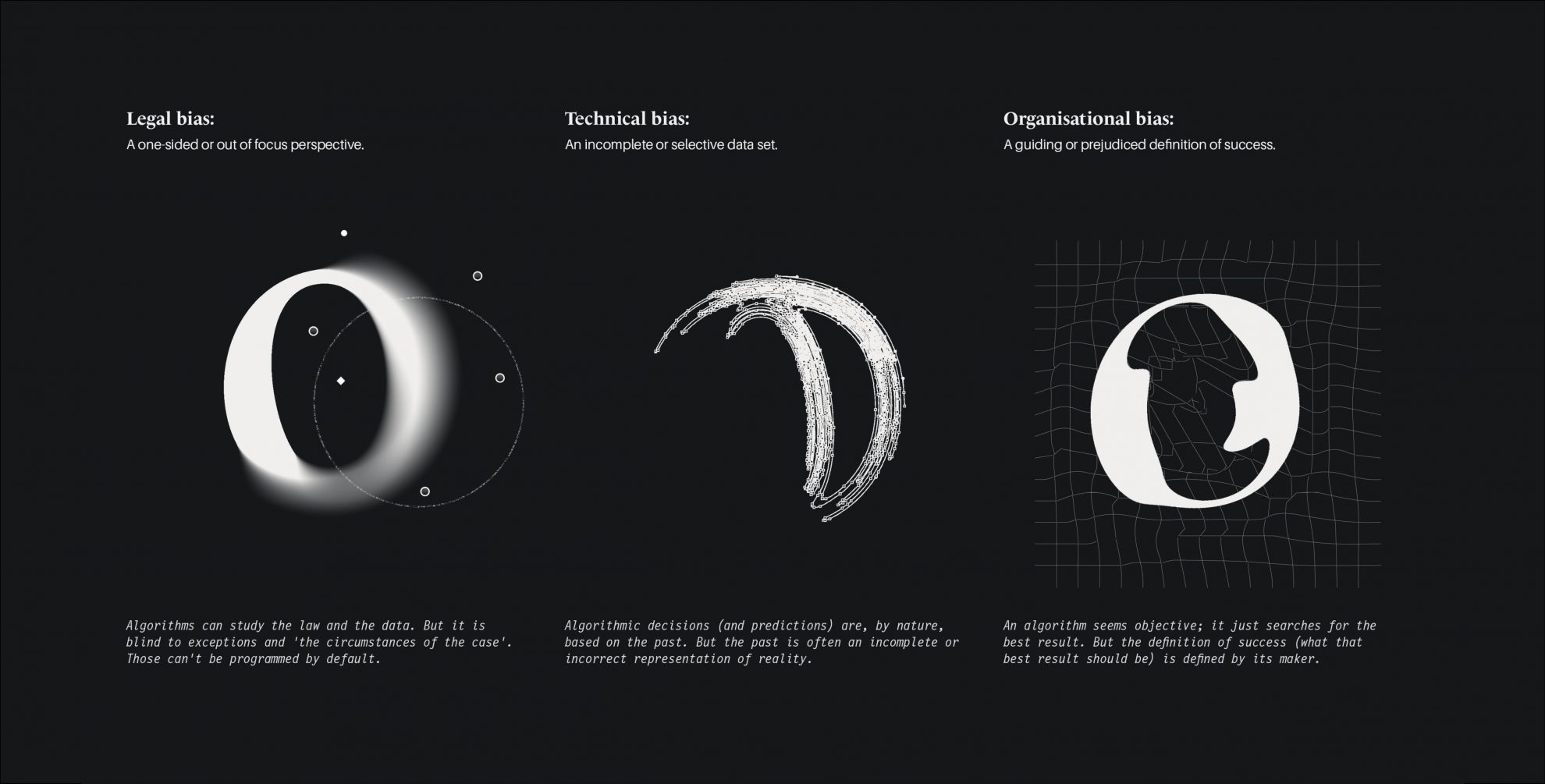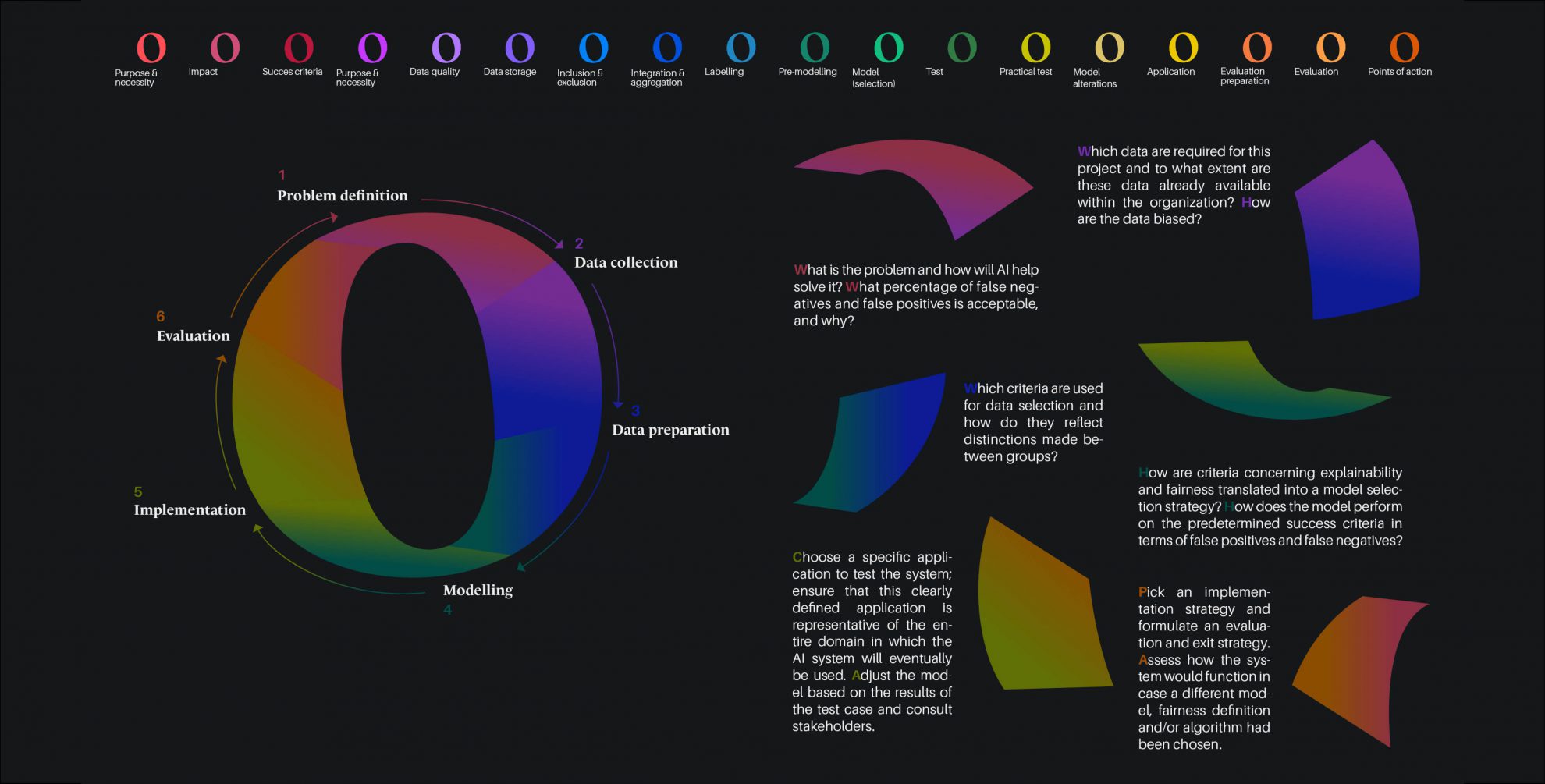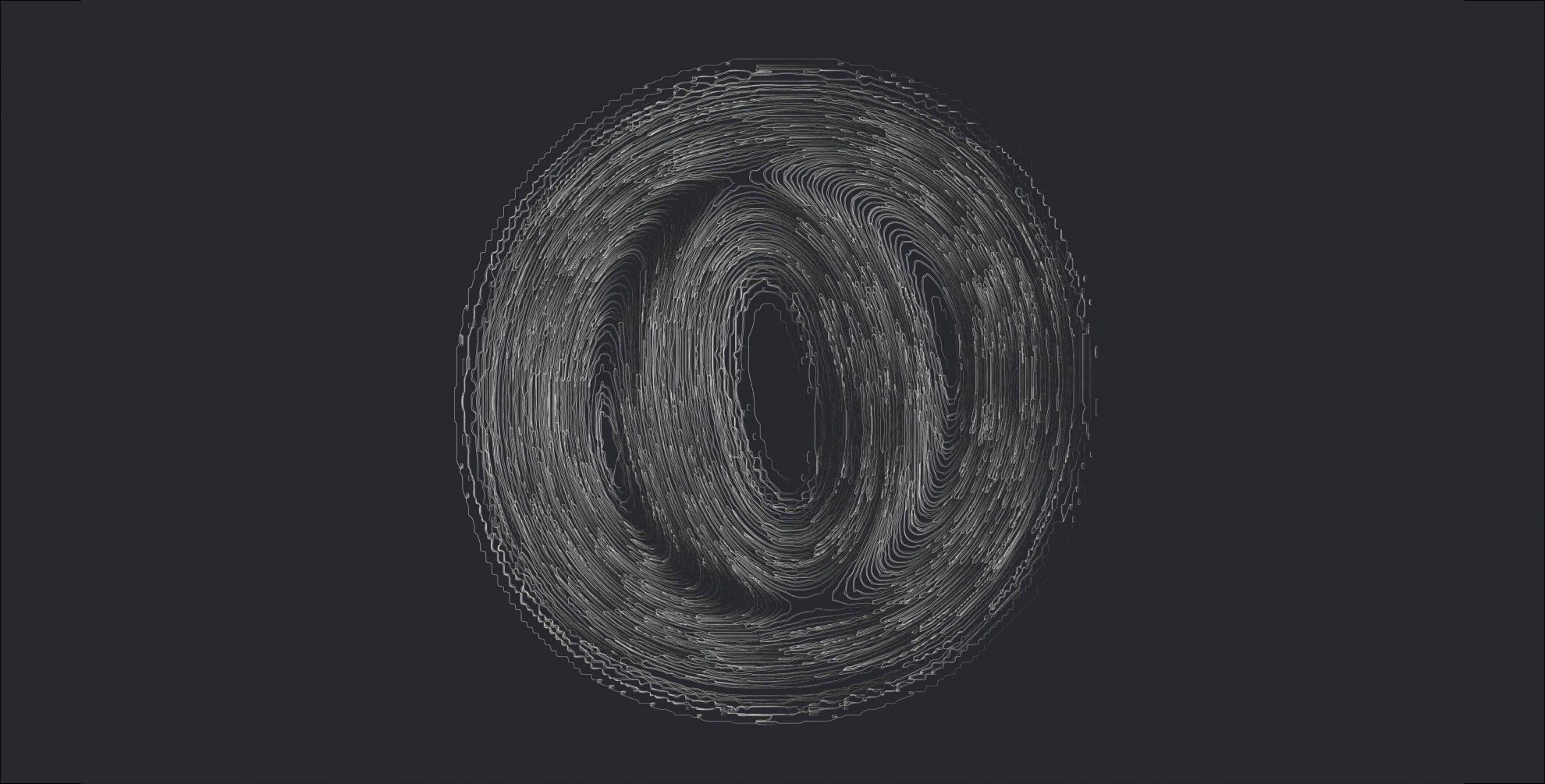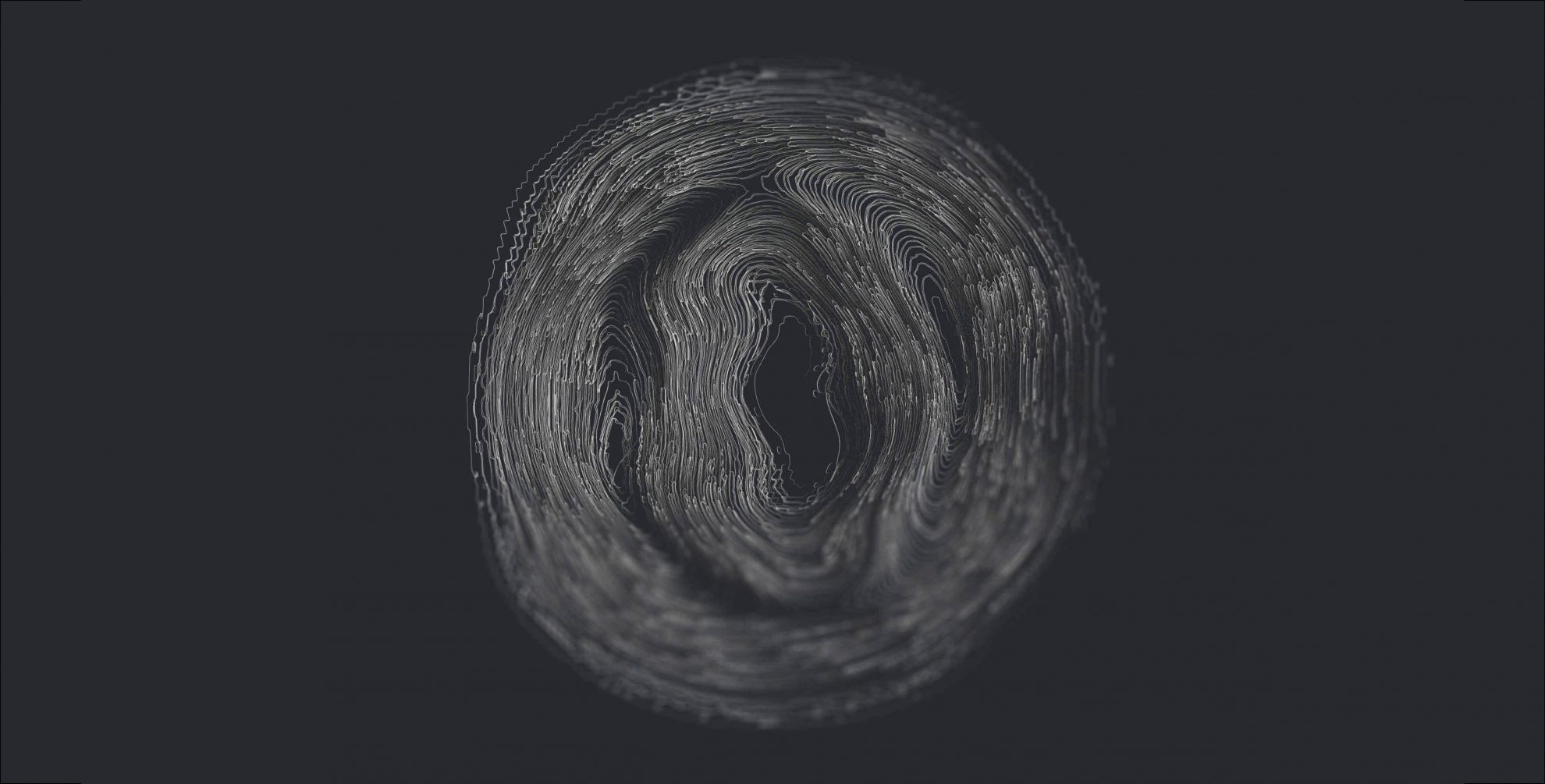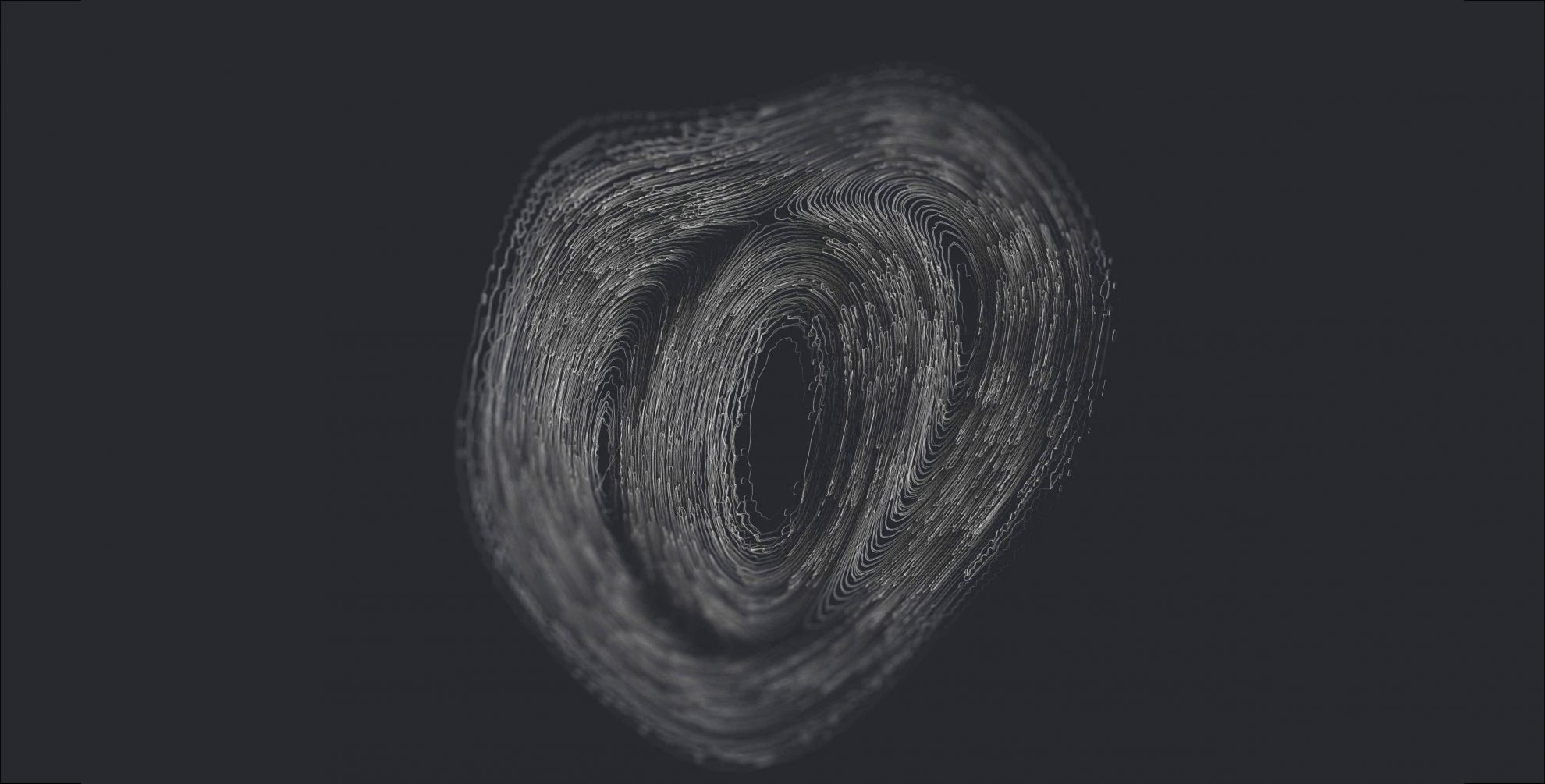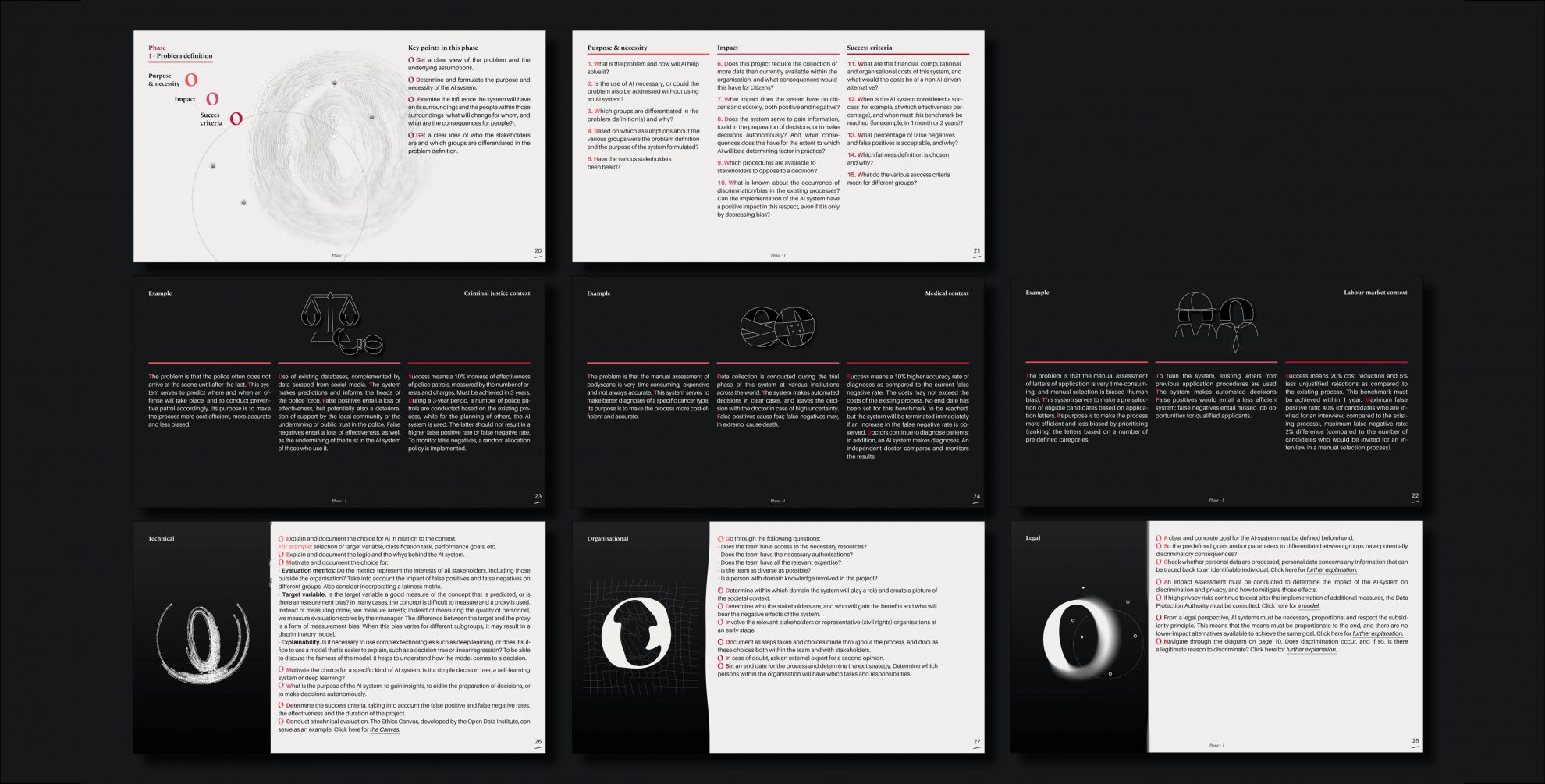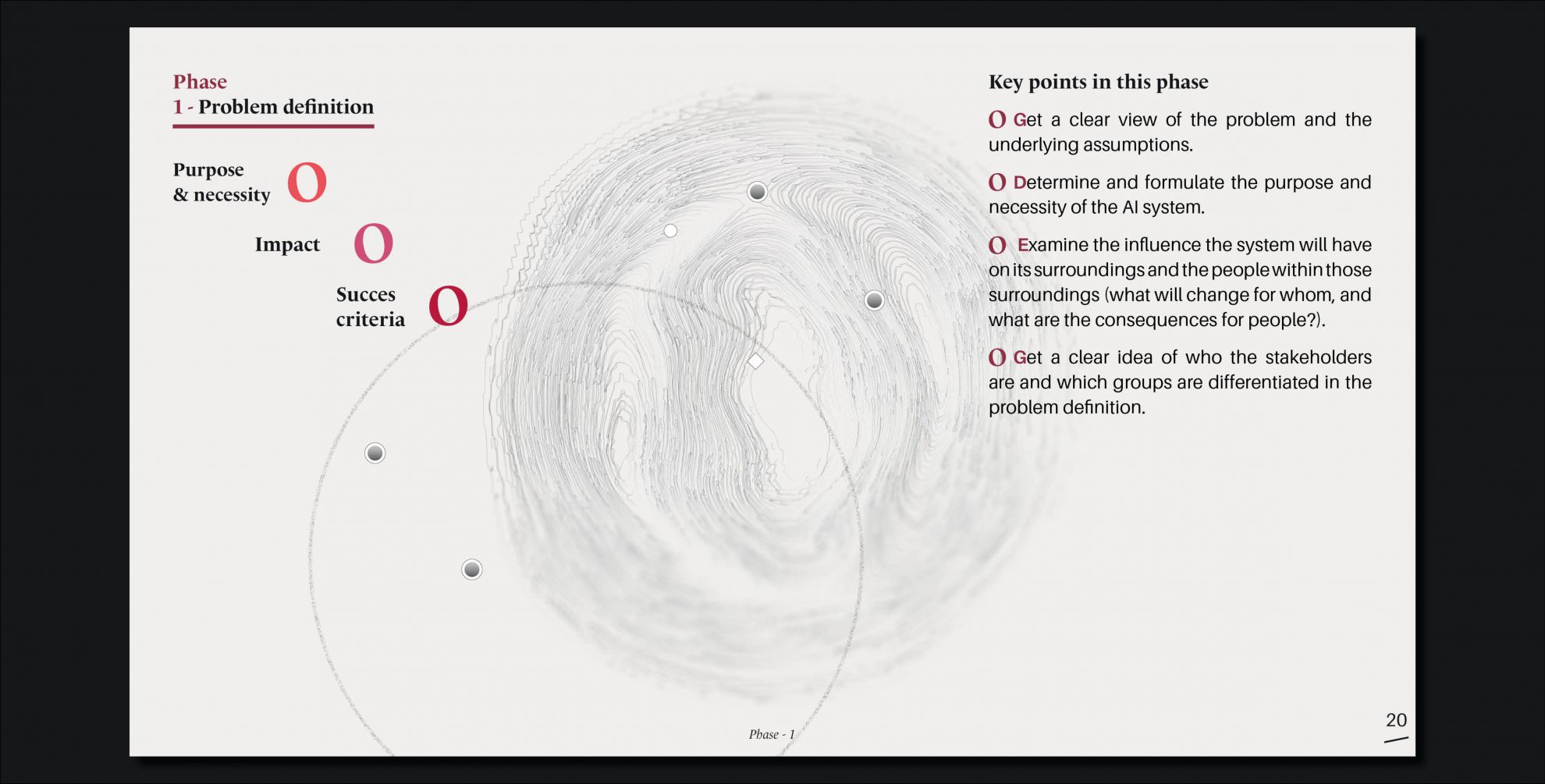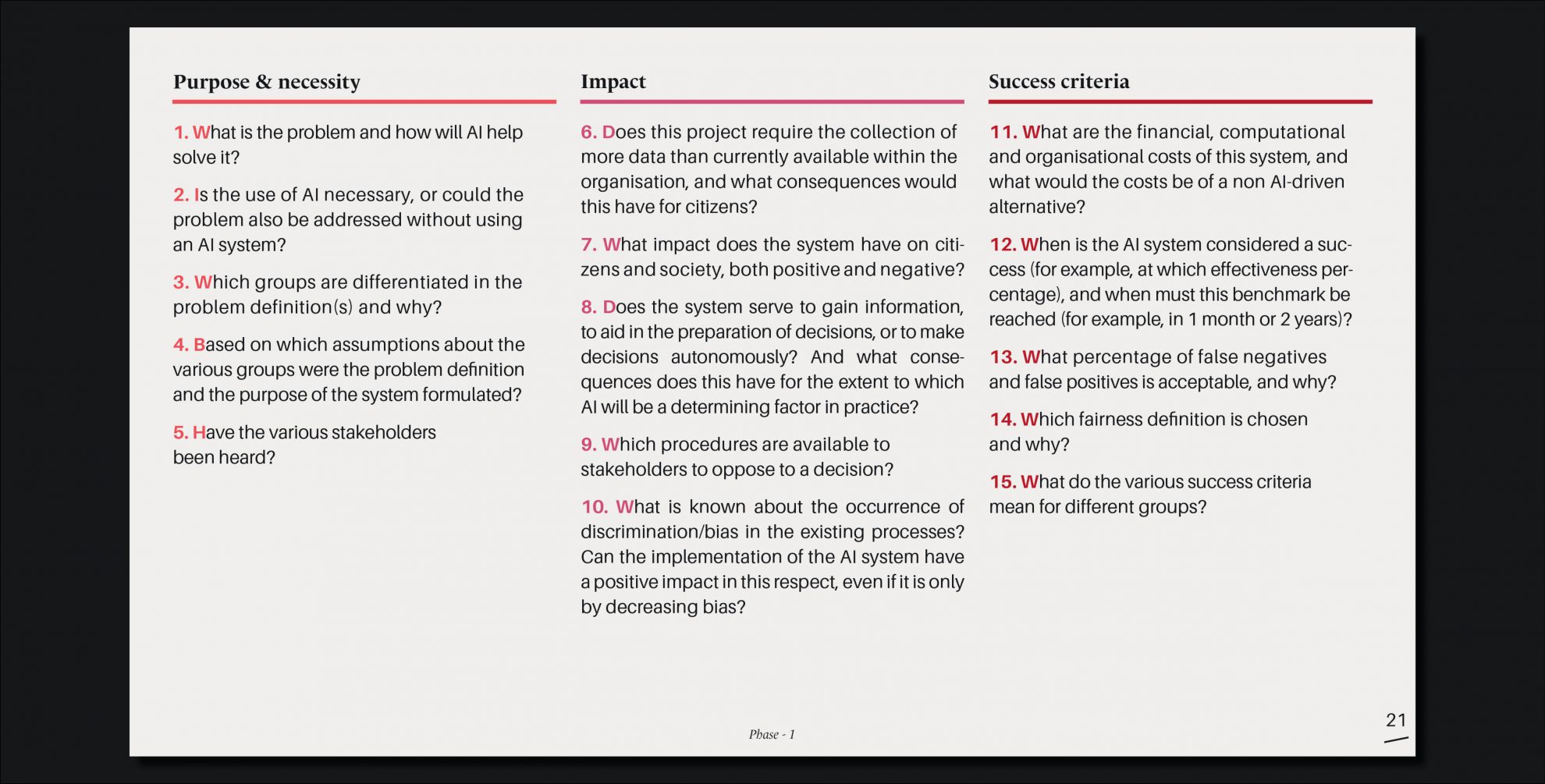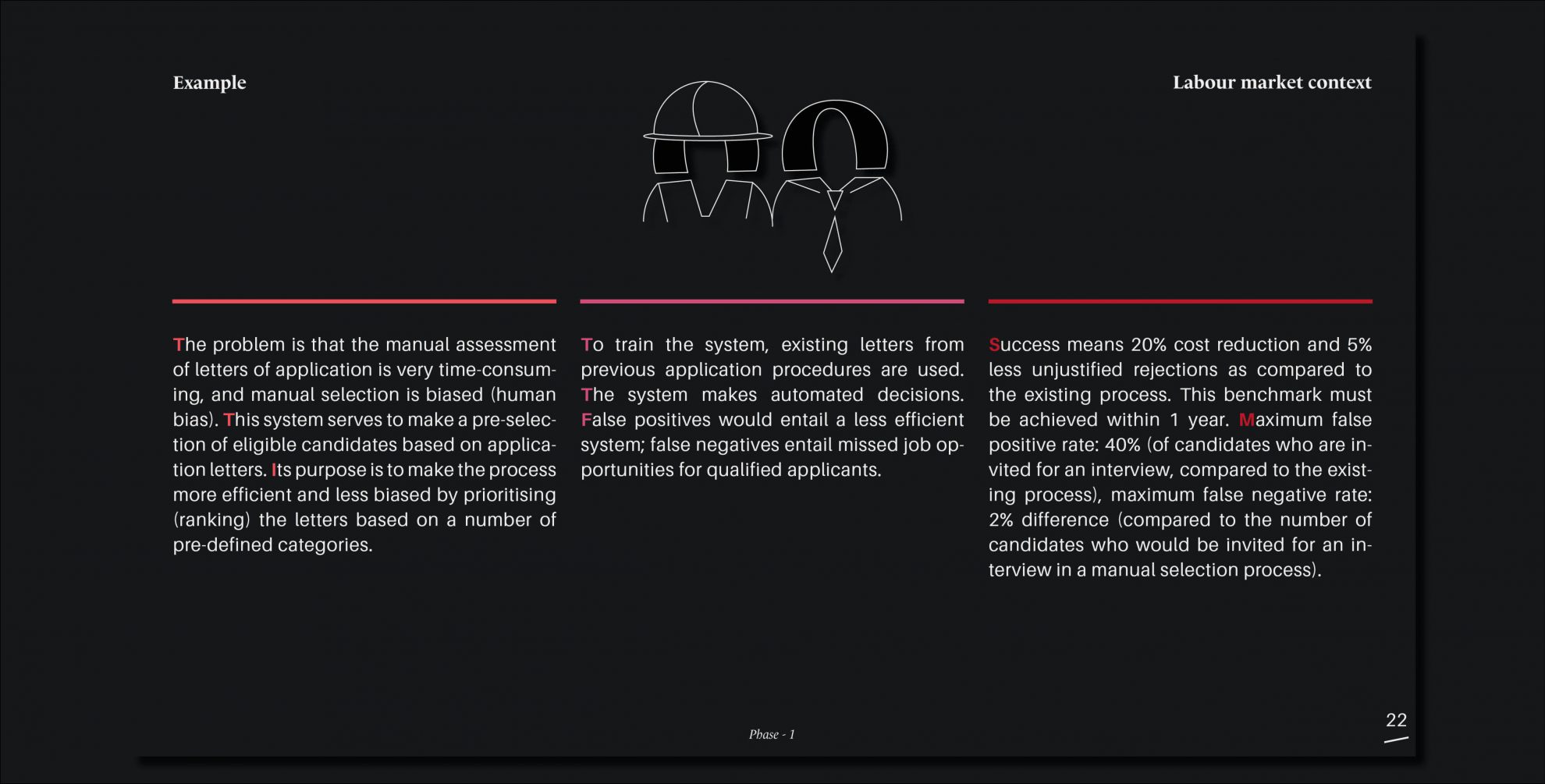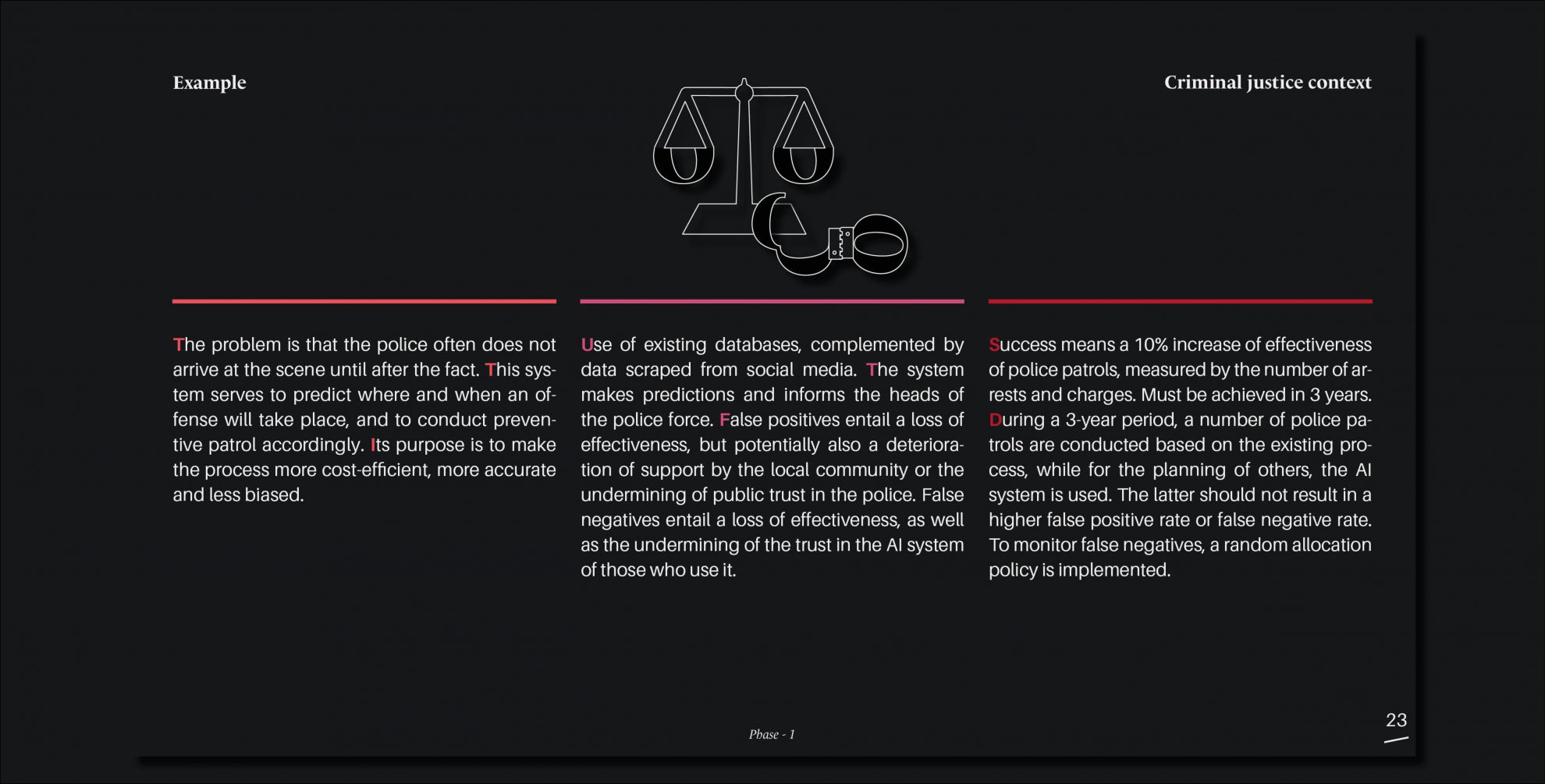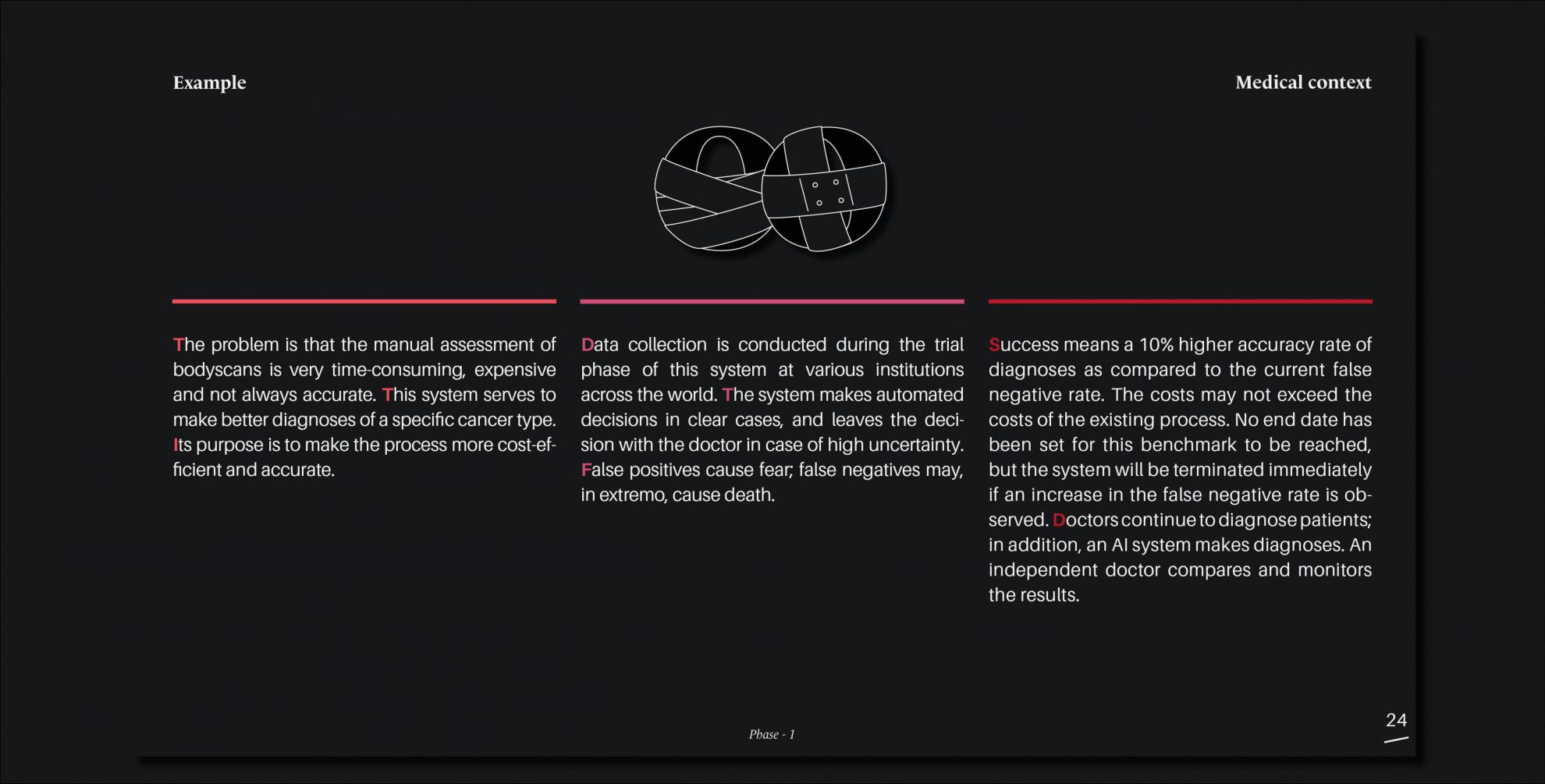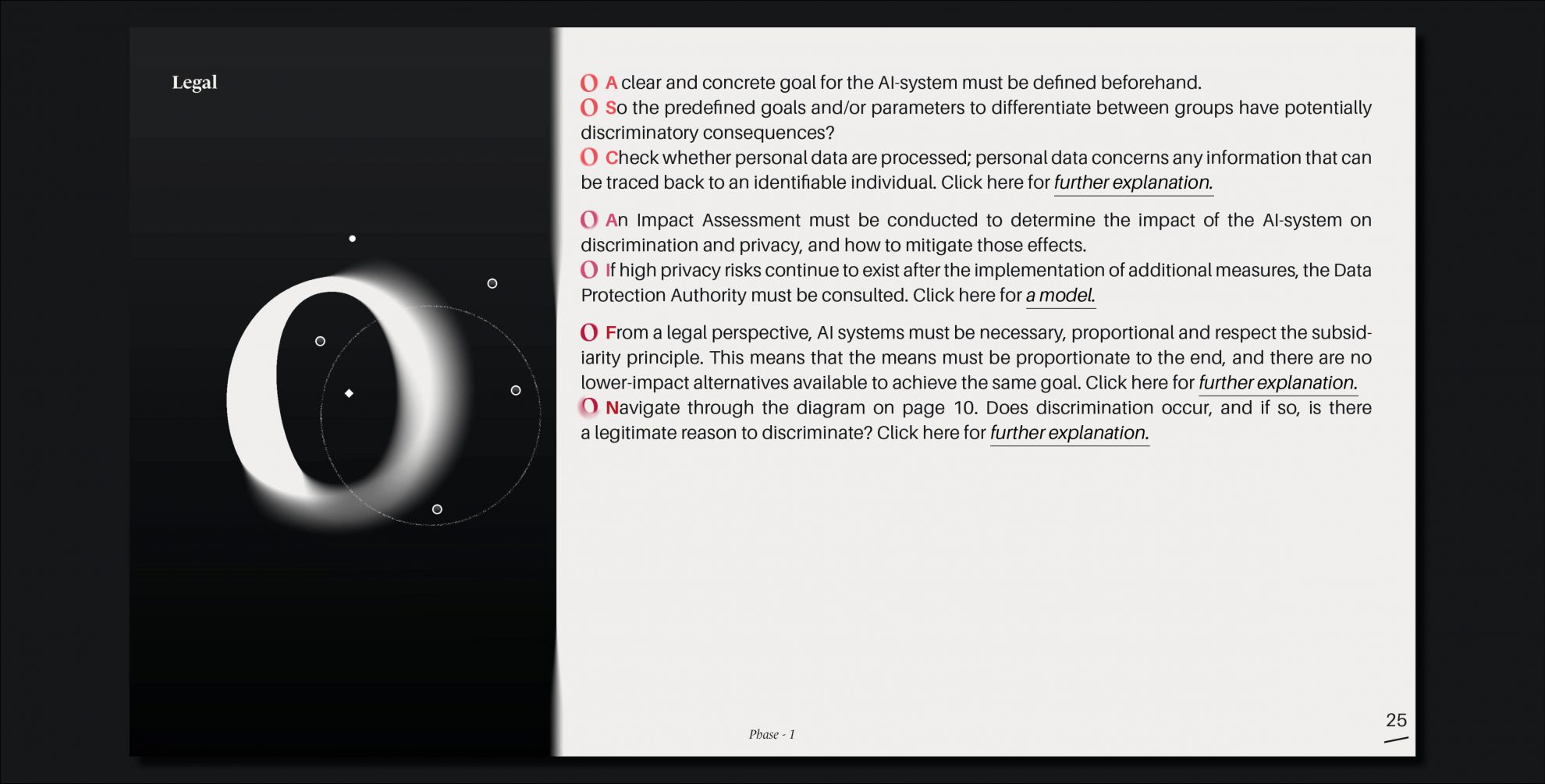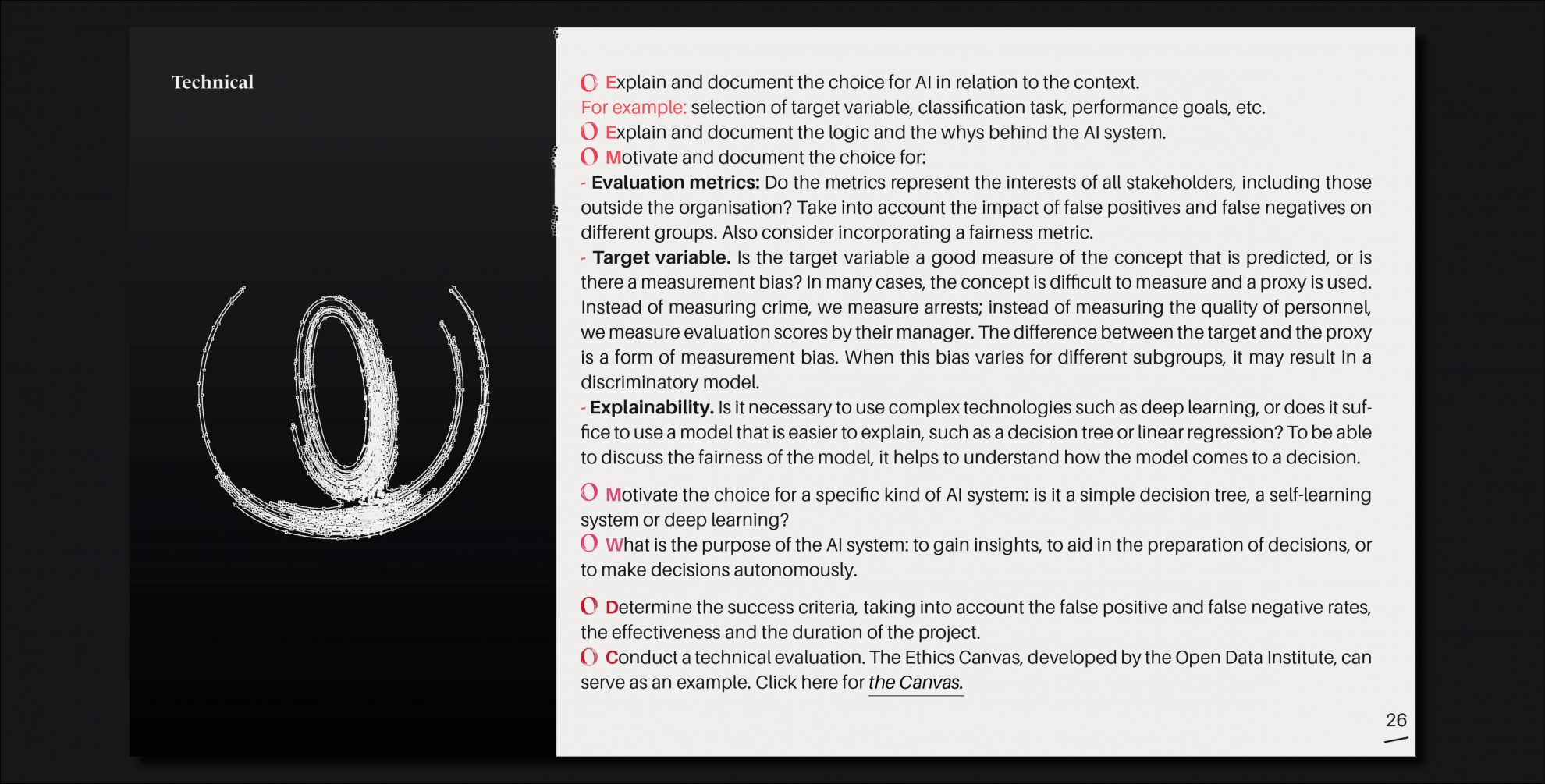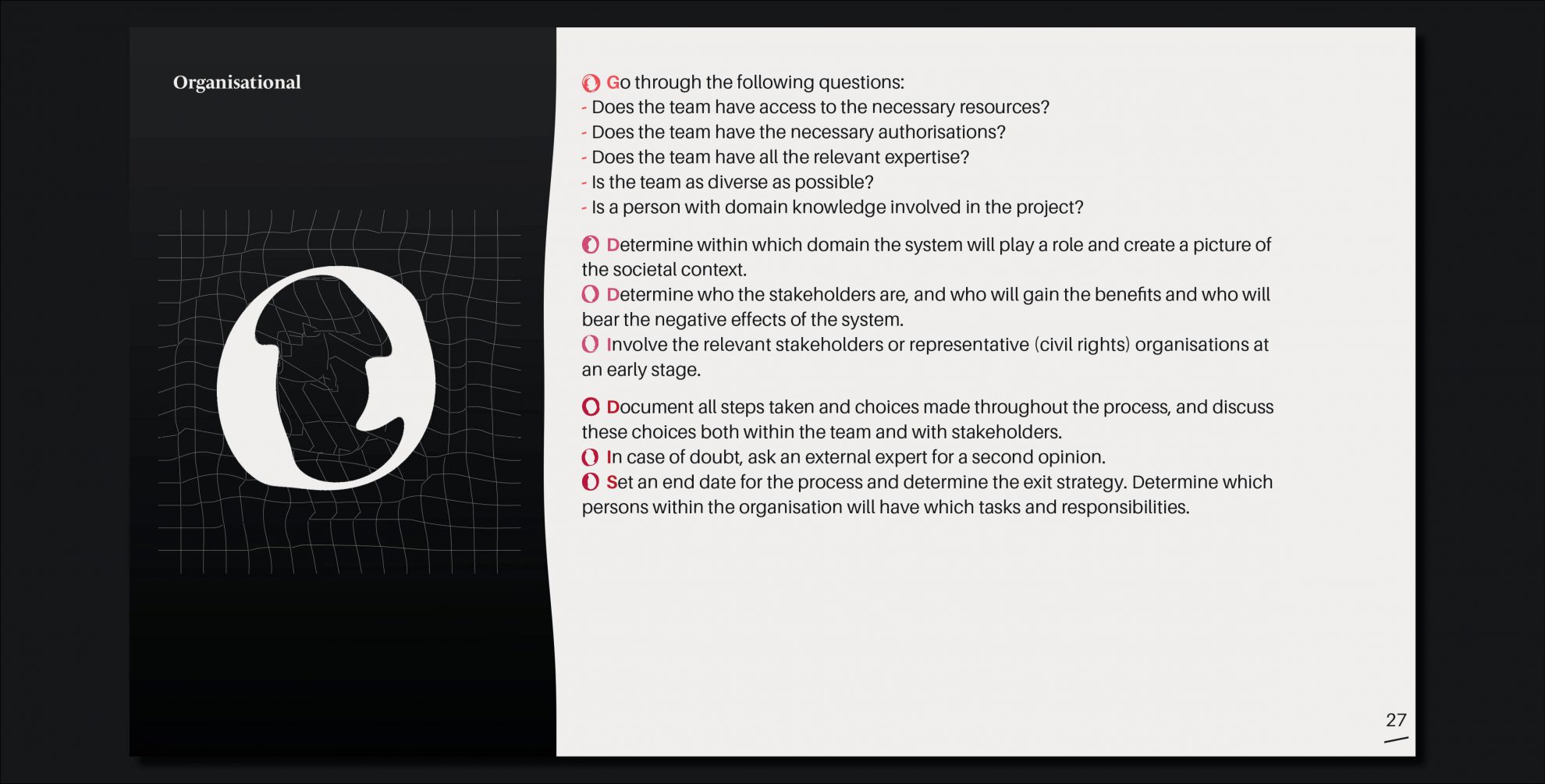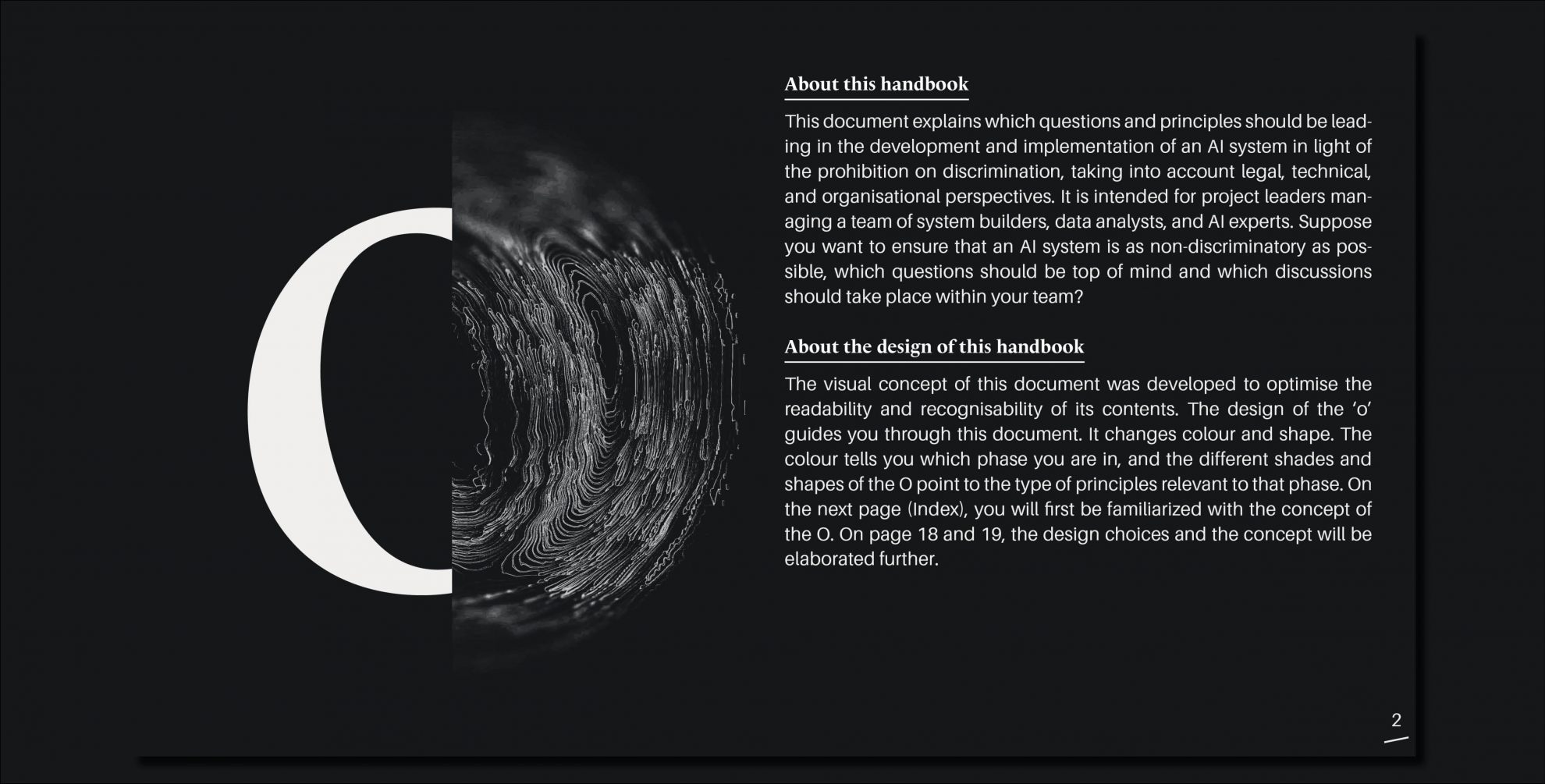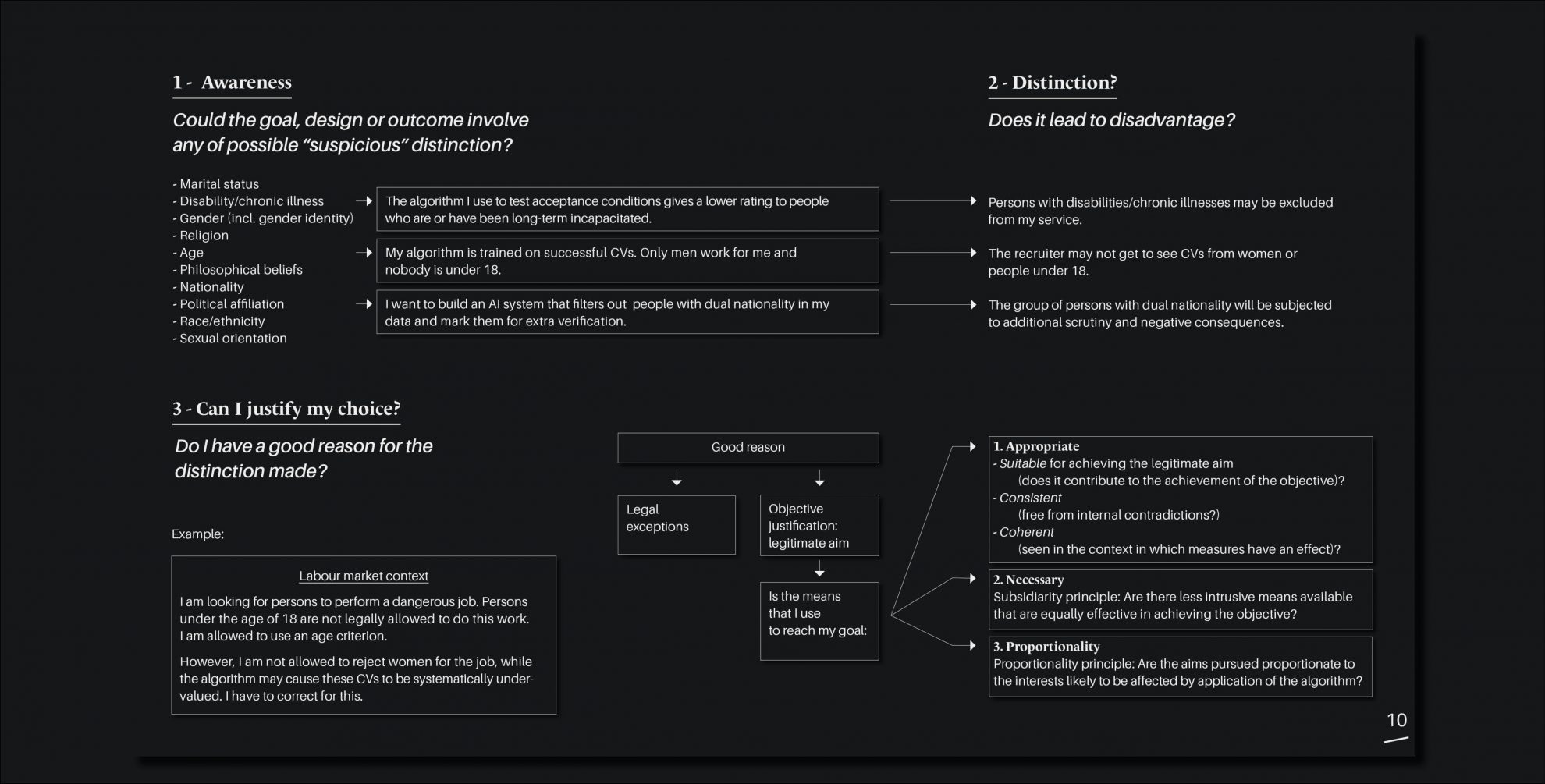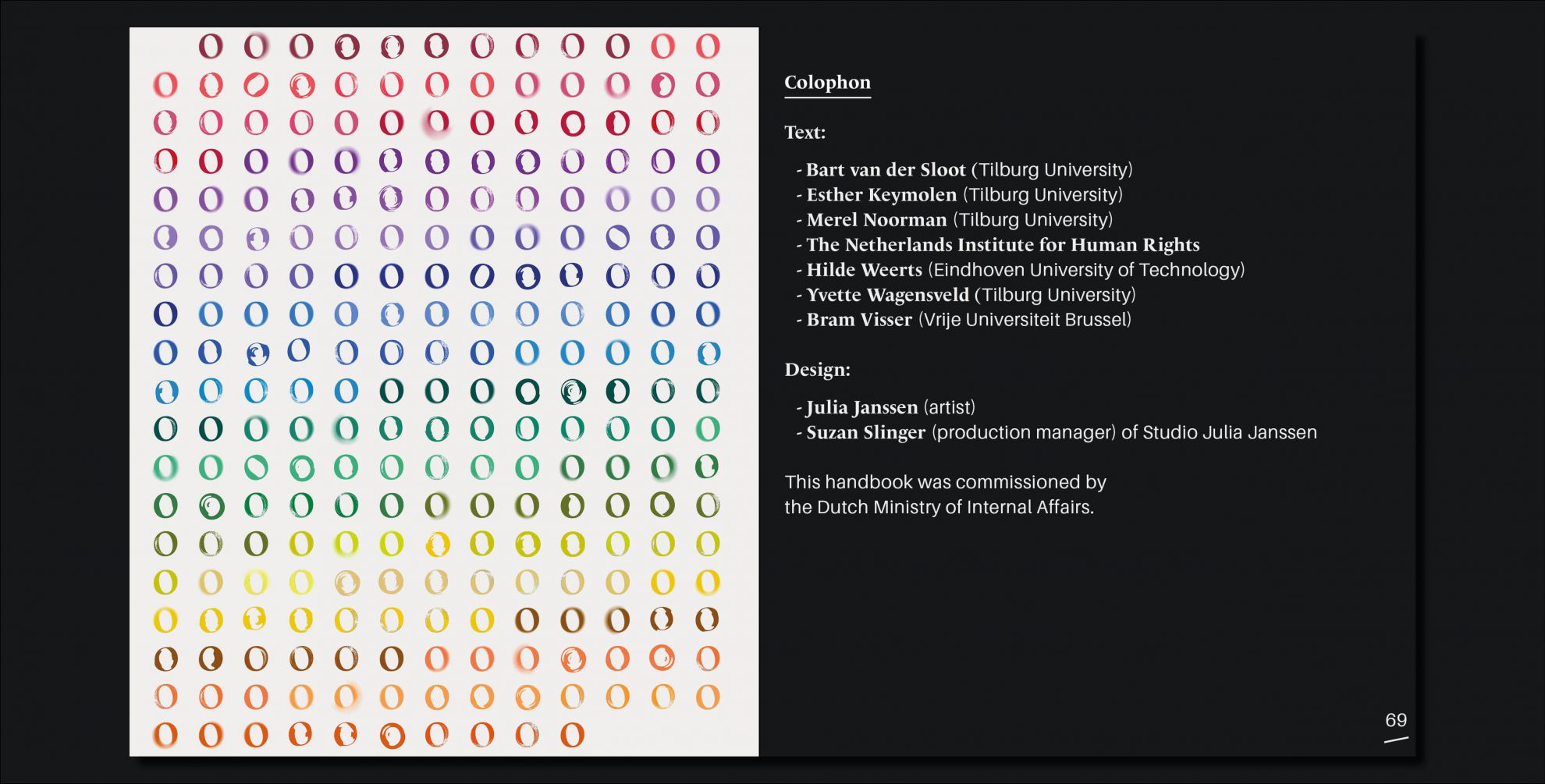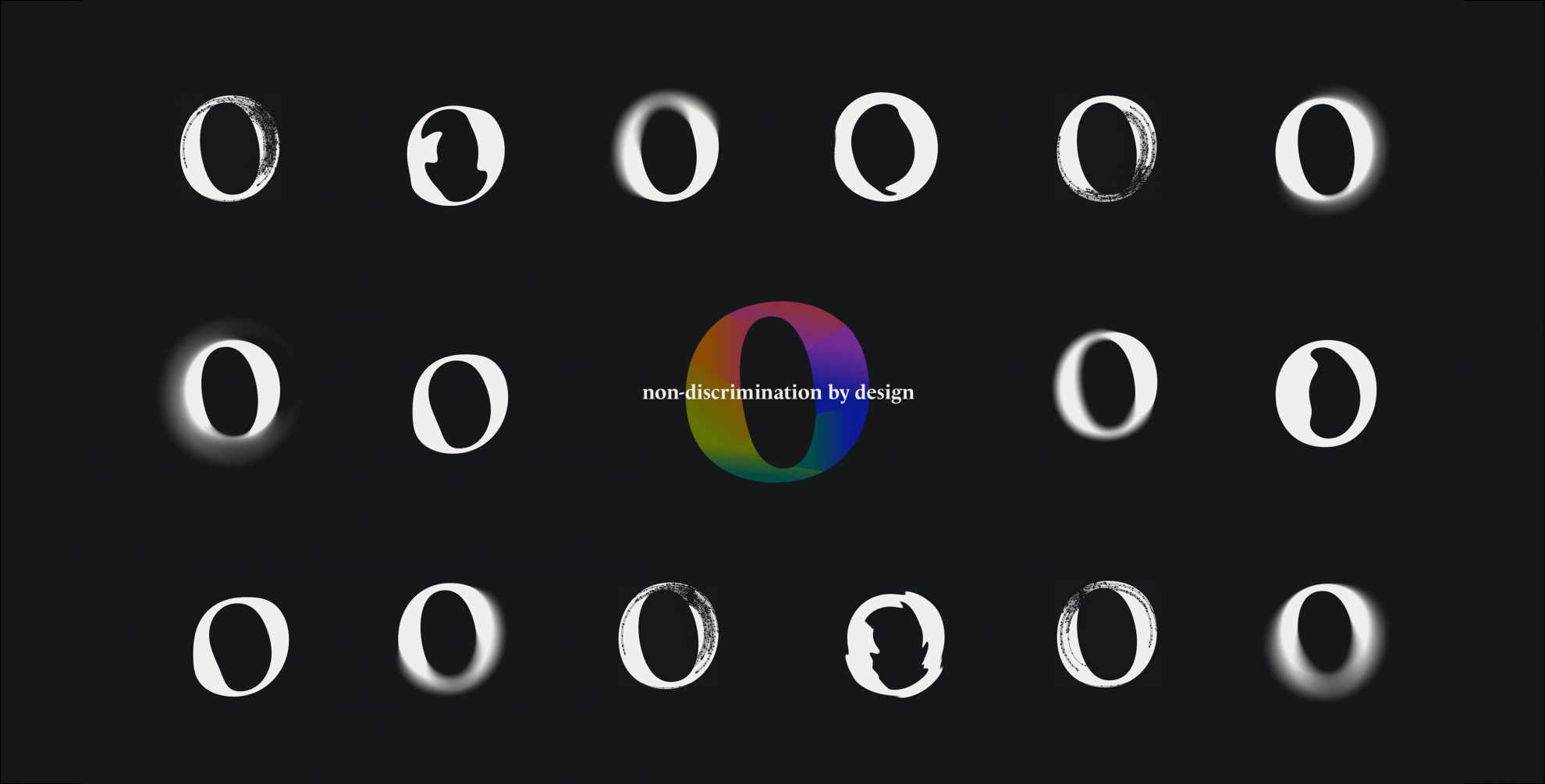
2021
Creating awareness of the danger of bias in algorithms. This document is a guideline how organizations can prevent their systems from being discriminatory.
In collaboration with a team of experts from Tilburg University, Eindhoven University of Technology, Vrije Universiteit Brussel and The Netherlands Institute for Human Rights. Commissioned by The Ministry of the Interior and Kingdom Relations.
Non-discimination by design
Decisions
Making the best, objective and efficient decision, that is the goal. So, we optimize choices with Artificial Intelligence: Decisions based on data, mathematics, and statistics rather than human emotions, prejudice or mood. In theory, digital decision-making should lead to more equality: the human bias will be eliminated. But, unfortunately, reality has proven different. In the process of digital decision-making, minorities are systematically disadvantaged, excluded or even punished. This is done consciously or unconsciously by the organizations themselves and is often not visible to the victims and the authorities.
Project
The Ministry of the Interior and Kingdom Relations commissioned
an investigation into the cause of discrimination in Artificial Intelligence. A team of experts from Tilburg University, Eindhoven University of Technology, Vrije Universiteit Brussel and The Netherlands Institute for Human Rights collaborated on creating a guideline and explaining how organizations can prevent their systems from being discriminatory. Therefore, the team differentiated the technical, legal, and organizational conditions that should be applied before, during and after creating an AI system.
Design
Janssen designed a concept to visually translate the dangers of bias in algorithms – based on three conditions: technical (an incomplete or selective dataset), legal (an unsharp or one-dimensional perspective), and organizational (a guiding definition of success). The design is a system of manipulated, biased ‘o’s. These change shape, color and composition throughout the document to bring the content to life and guide the reader in understanding the complex legal matter.
The result is a visually unique document in which text and content reinforce each other – a representation of an interdisciplinary collaboration between politicians, lawyers, scientists, tech-engineers, and the artist/designer’s role to
tackle social issues.
